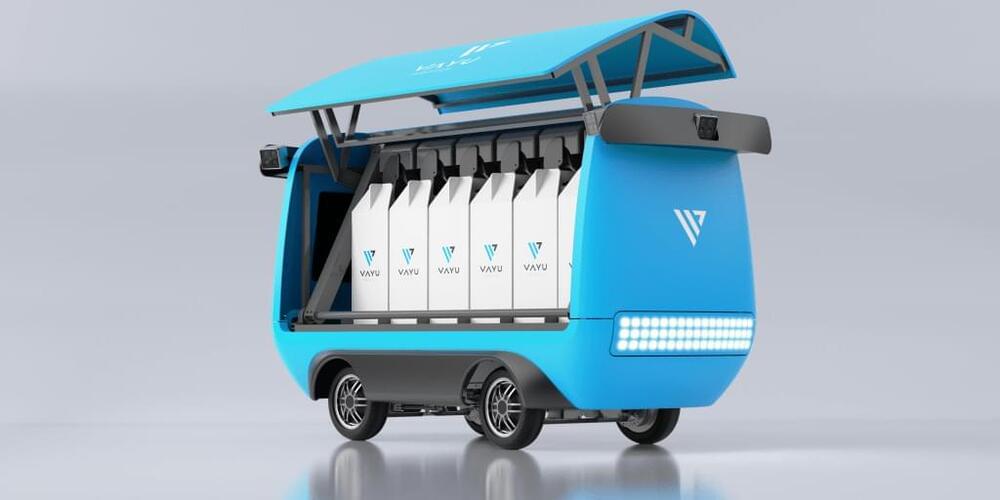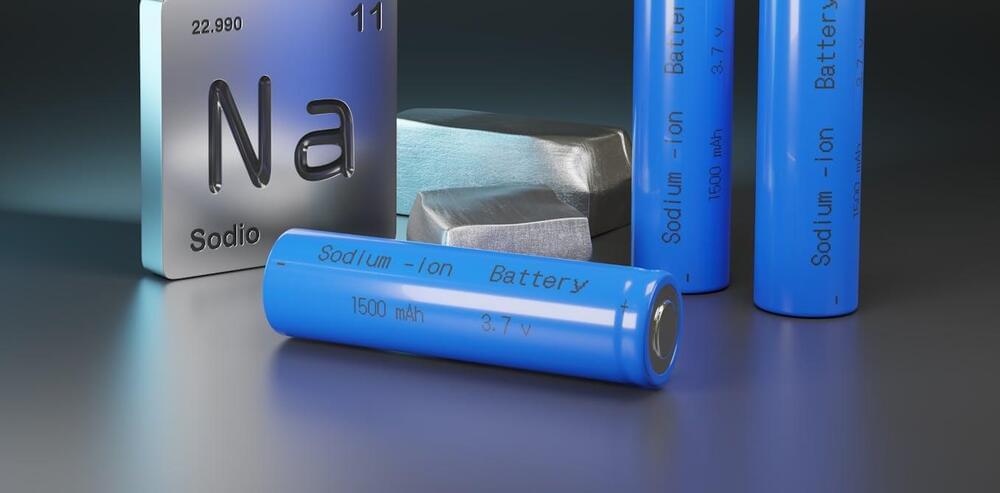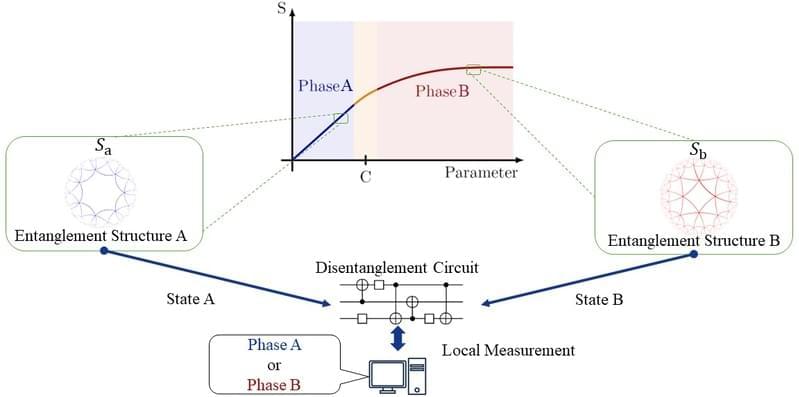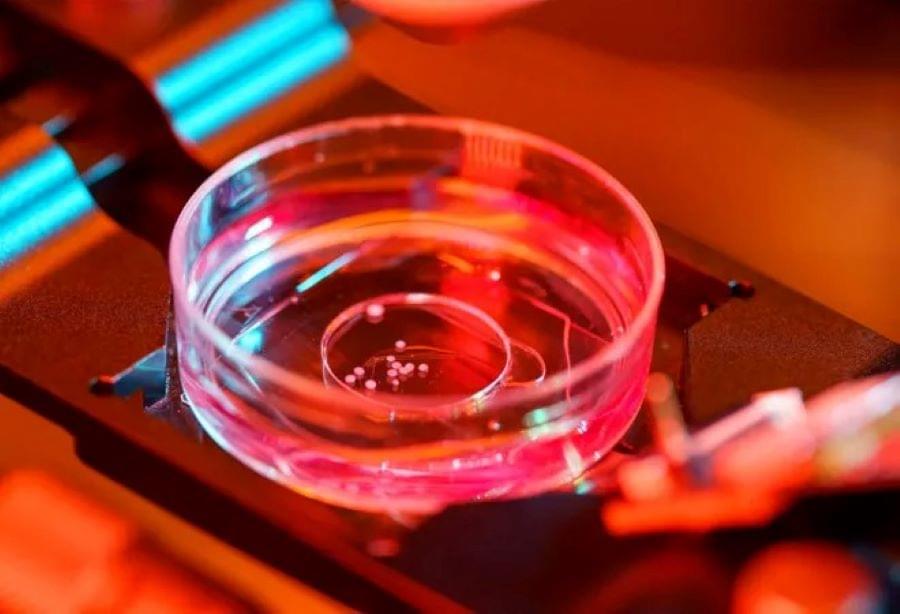Page 461
Jul 23, 2024
Ex-Apple car engineers’ startup Vayu offers autonomous delivery robots sans Lidar sensors
Posted by Cecile G. Tamura in categories: robotics/AI, transportation
Vayu is already witnessing significant traction, with as many as 20 enterprises piloting it’s novel technology and over 100 on a waitlist.
Jul 23, 2024
Tissue Nanotransfection Silicon Chip and Related Electroporation-Based Technologies for In Vivo Tissue Reprogramming
Posted by Quinn Sena in categories: biotech/medical, computing, mobile phones, neuroscience
Nanotransfection is very useful and could be used as a way to heal oneself on a smartphone in one touch with cell reprogramming and much more like gene transfer.
Tissue nanotransfection (TNT), a cutting-edge technique of in vivo gene therapy, has gained substantial attention in various applications ranging from in vivo tissue reprogramming in regenerative medicine, and wound healing to cancer treatment. This technique harnesses the advancements in the semiconductor processes, facilitating the integration of conventional transdermal gene delivery methods—nanoelectroporation and microneedle technologies. TNT silicon chips have demonstrated considerable promise in reprogramming fibroblast cells of skin in vivo into vascular or neural cells in preclinical studies to assist in the recovery of injured limbs and damaged brain tissue. More recently, the application of TNT chips has been extended to the area of exosomes, which are vital for intracellular communication to track their functionality during the wound healing process.
Jul 23, 2024
Creating loops of liquid lithium for fusion temperature control
Posted by Shailesh Prasad in categories: engineering, nuclear energy, particle physics
Fusion vessels have a Goldilocks problem: The plasma within needs to be hot enough to generate net power, but if it’s too hot, it can damage the vessel’s interior. Researchers at the Princeton Plasma Physics Laboratory (PPPL) are exploring ways to draw away excess heat, including several methods that use liquid metal.
One possibility, say researchers at the U.S. Department of Energy Lab, involves flowing liquid lithium up and down a series of slats in tiles lining the bottom of the vessel. The liquid metal could also help to protect the components that face the plasma against a bombardment of particles known as neutrons.
“The prevailing option for an economical commercial fusion reactor is a compact design,” said PPPL’s Egemen Kolemen, co-author of a 2022 paper on the research and an associate professor of mechanical and aerospace engineering and the Andlinger Center for Energy and the Environment. However, compactness makes handling the heat flux and neutron bombardment a bigger challenge.
Jul 23, 2024
Sodium-ion batteries are set to spark a renewable energy revolution — and Australia must be ready
Posted by Shailesh Prasad in categories: government, nuclear energy, sustainability
The challenges posed by solar and wind generators are real. They are inherently variable, producing electricity only when the sun is shining and the wind is blowing. To ensure reliable energy supplies, grids dominated by renewables need “firming” capacity: back-up technology that can supply electricity on demand.
Some, including the Albanese government, argue gas-fired generators are needed to fill the gap. Others, such as the Coalition, say renewables can’t “keep the lights on” at all and Australia should pursue nuclear energy instead.
But a new way to firm up the world’s electricity grids is fast developing: sodium-ion batteries. This emerging energy storage technology could be a game-changer – enabling our grids to run on 100% renewables.
Jul 23, 2024
Physicists uncover key to resolving long-standing inertial confinement fusion hohlraum drive deficit
Posted by Shailesh Prasad in categories: energy, physics
“Significant effort has been invested over the years to pinpoint the physical cause of the radiation drive-deficit problem,” Chen said. “We are excited about this discovery as it helps resolve a decade-long puzzle in ICF research. Our findings point the way to an improvement in the predictive capabilities of simulations, which is crucial for the success of future fusion experiments.”
In NIF experiments, scientists use a device called a hohlraum—approximately the size of a pencil eraser—to convert laser energy into X-rays, which then compress a fuel capsule to achieve fusion.
For years, there has been a problem where the predicted X-ray energy (drive) was higher than what was measured in experiments. This results in the time of peak neutron production, or “bangtime,” occurring roughly 400 picoseconds too early in simulations. This discrepancy is known as the “drive-deficit” because modelers had to artificially reduce the laser drive in the simulations to match observed bangtime.
Jul 23, 2024
Learning quantum phases via single-qubit disentanglement
Posted by Shailesh Prasad in categories: information science, quantum physics
Zheng An, Chenfeng Cao, Cheng-Qian Xu, and D. L. Zhou, Quantum 8, 1421 (2024). Identifying phases of matter presents considerable challenges, particularly within the domain of quantum theory, where the complexity of ground states appears to increase exponentially with system size. Quantum many-body systems exhibit an array of complex entanglement structures spanning distinct phases. Although extensive research has explored the relationship between quantum phase transitions and quantum entanglement, establishing a direct, pragmatic connection between them remains a critical challenge. In this work, we present a novel and efficient quantum phase transition classifier, utilizing disentanglement with reinforcement learning-optimized variational quantum circuits. We demonstrate the effectiveness of this method on quantum phase transitions in the transverse field Ising model (TFIM) and the XXZ model. Moreover, we observe the algorithm’s ability to learn the Kramers-Wannier duality pertaining to entanglement structures in the TFIM. Our approach not only identifies phase transitions based on the performance of the disentangling circuits but also exhibits impressive scalability, facilitating its application in larger and more complex quantum systems. This study sheds light on the characterization of quantum phases through the entanglement structures inherent in quantum many-body systems.
Jul 23, 2024
New 3D reconstruction method aids analysis of property-defining defects
Posted by Shailesh Prasad in categories: engineering, nanotechnology
An international research collaboration, including a group from Cornell Engineering, has applied a new X-ray-based reconstruction technique to observe, for the first time, topological defects in a nanoscale self-assembly-based cubic network structure of a polymer-metal composite material imaged over a relatively large sample volume.
Jul 23, 2024
Diving into Organoid Intelligence
Posted by Dan Breeden in categories: biotech/medical, health, robotics/AI, supercomputing
The field of organoid intelligence is recognized as groundbreaking. In this field, scientists utilize human brain cells to enhance computer functionality. They cultivate tissues in laboratories that mimic real organs, particularly the brain. These brain organoids can perform brain-like functions and are being developed by Dr. Thomas Hartung and his team at the Johns Hopkins Bloomberg School of Public Health.
For nearly two decades, scientists have used organoids to conduct experiments without harming humans or animals. Hartung, who has been cultivating brain organoids from human skin samples since 2012, aims to integrate these organoids into computing. This approach promises more energy-efficient computing than current supercomputers and could revolutionize drug testing, improve our understanding of the human brain, and push the boundaries of computing technology.
The conducted research highlights the potential of biocomputing to surpass the limitations of traditional computing and AI. Despite AI’s advancements, it still falls short of replicating the human brain’s capabilities, such as energy efficiency, learning, and complex decision-making. The human brain’s capacity for information storage and energy efficiency remains unparalleled by modern computers. Hartung’s work with brain organoids, inspired by Nobel Prize-winning stem cell research, aims to replicate cognitive functions in the lab. This research could open new avenues for understanding the human brain by allowing ethical experimentation. The team envisions scaling up the size of brain organoids and developing communication tools for input and output, enabling more complex tasks.
Jul 23, 2024
Scientists Have Created Hybrid Intelligence
Posted by Dan Breeden in category: robotics/AI
Scientists integrated lab-grown brain organoids with robots, creating hybrid intelligence. It offers new potential for neurological condition treatments.

















